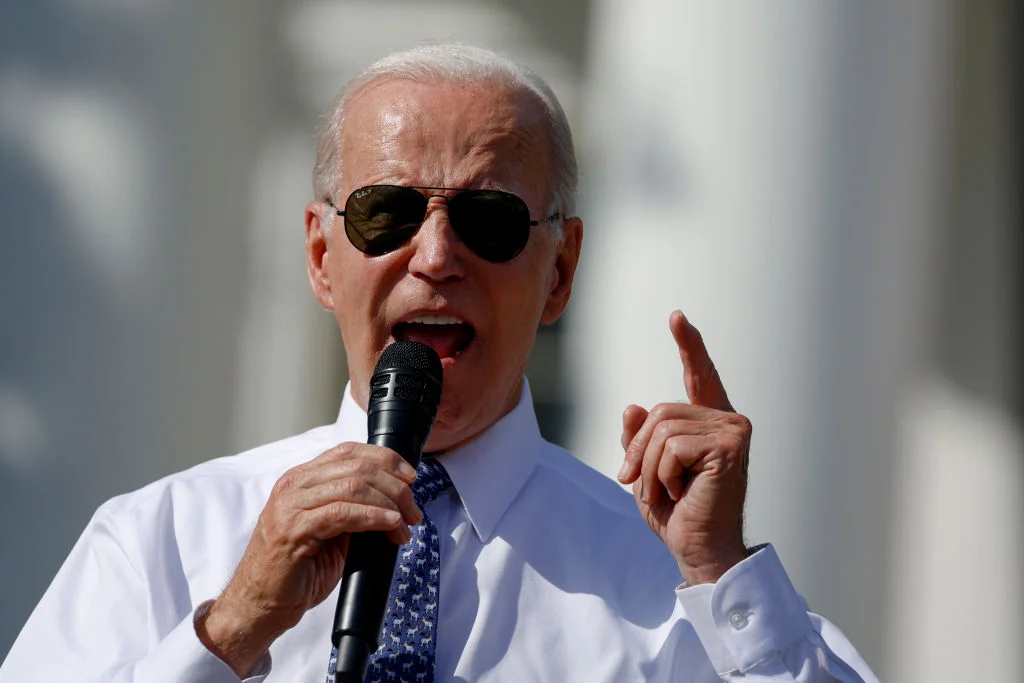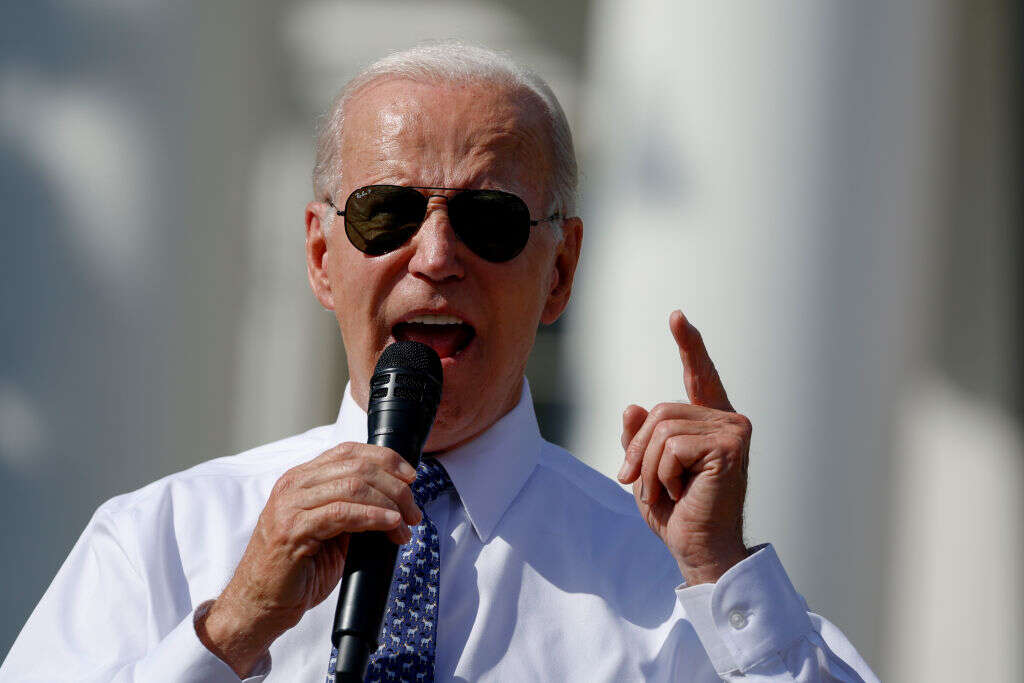
US President Joe Biden signed the Inflation Reduction Act into law on 16 August 2022. Along with a number of provisions, such as those to lower the cost of health insurance by 2024. The act’s main goal is to fund the largest investment in fighting against climate change in US history.

Many of the objectives have been on the cards for decades, stymied by regime change and legislative difficulties, but there are hopes that the Inflation Reduction Act will begin to make gains, despite controversies.
What are the key elements of the Inflation Reduction Act?
The Inflation Reduction Act includes various measures related to healthcare and the cost of living, including a 15% minimum tax rate, prescription drug price reforms, IRS tax enforcement funding and subsidy extensions to the Affordable Care Act.
It also embodies an unprecedented investment in the fight against climate change. These are some of the provisions.
- Spurring transmission line development and funding
America’s transmission infrastructure continues to fall behind projected numbers and demand to decarbonise the power sector. The Inflation Reduction Act will finally try to help the process along with a series of investments and funding initiatives.
To do this, the act will direct $2bn to the Department of Energy (DOE), which will consequently make direct loans to non-federal entities to modify the electric transmission facilities by 2031. To increase the pace of the process, the Inflation Reduction Act also will appropriate $760m for the DOE to make loans to federal, state, and local authorities who will oversee the approval and bureaucratic elements of new transmission infrastructure.
Other grant funds are additionally given out for economic development initiatives. The Act will dedicate $100m to the DOE, to encourage the development of transmission of electricity generated by the offshore wind across state lines.
- Imposing fees on methane emissions and other reduction programmes
The Inflation Reduction Act will introduce a waste emission charge on some oil and gas facilities. The criteria for these facilities is having an emission rate of more than 25,000 metric tonnes of carbon dioxide equivalent per year. This is the first federal fee on methane, and it is also the first time US Congress has imposed a tax on greenhouse gas emissions.
The waste emission charge is calculated by multiplying the amount of the methane exceedance in metric tonnes by a fixed amount that will gradually increase over the years.
One of the initiatives that Biden’s plan entails is removing barriers to community solar, which would make solar power more accessible and affordable for the average citizen.
- Boosting electric vehicles and alternative vehicle fuels
The Inflation Reduction Act, among its significant changes to incentivise new electric vehicles, also includes a long-term extension of the Alternative Fuel Refuelling Property tax credit through to 2032. President Biden announced that, following this new initiative, 50% of cars sold by 2030 will be electric.
This is a major step, as the US transportation sector was responsible for 29% of 2019 gross US greenhouse gas emissions.
The government plans to reach these numbers by:
- Eliminating the manufacturer’s phase-out cap, which gradually increments their tax credit as their income rises
- Allowing tax credits to lower the costs for families and businesses to make electric vehicles more affordable for the general public
This is part of the act’s aim to support energy reliability and cleaner energy production with investments in American clean energy manufacturing. More than $2bn was given in grants to retool existing auto manufacturing facilities to manufacture clean vehicles.
Furthermore, the act enhances domestic mineral production and manufacturing capacity by tying the increased tax credits to US manufacturing goals. This also motivates the development of alternative fuelling stations, as the lack of such infrastructure has been one of the main obstacles to the large-scale usage of electric vehicles.
However, private and work-related vehicles are not the only ones involved. The US Postal Service was offered $3bn to electrify its transportation fleet of more than 217,000 vehicles; school buses and refuse trucks will benefit from more than $1bn to switch over to a more sustainable option; zero-emission equipment will be installed, funded by $3bn, in order to reach zero emissions.
- Facilitating onshore and offshore oil and gas lease sales
Lease Sale 257 is reinstated, which requires some other offshore oil and gas lease sales in the Gulf of Mexico and Alaska to take place by 2023. The Act tried to reach a compromise between supporting traditional energy sources in the near future and pausing oil and gas leasing of federal lands and waters.
The Inflation Reduction Act aims to:
- Accept the highest bid received for Lease Sale 257
- Move forward with Lease Sales 258, 259 and 261 in Alaska and the Gulf of Mexico by, respectively, March 2023 and September 2023
The act links the usage of federal wind and solar development rights to those for oil and gas leases for a period of ten years. However, the right to use wind and solar energy might not be issued unless these conditions are met:
- An onshore oil and gas lease takes place during a 120-day period before the right-of-way is granted
- The sum of the acres offered for lease in onshore oil and gas in the one-year period before the right-of-way is granted is lesser than 2 million acres or 50% of the acreage that the lease sales would interest
Other measures promoted by the Inflation Reduction Act are:
- Funding green banks
- Funding environmental justice initiatives
- Advancing forest service and EPA wildfire risk reduction programmes
- Supporting climate reporting obligations
- Passing on permit streamlining legislation
Furthermore, nature is going to be used as a booster for more sustainable technology: oceans and trees store carbon, offer shelter to fauna facing the consequences of climate change and sustain entire communities. As such, $50bn would be given to protect old and mature forests, $2.6bn will be invested in coastal resilience grants, $250bn to offer endangered species recovery plans and $1bn to review the current environmental policies.
Who will benefit from it?
This law will provide direct consumer rebates and tax credits to purchase more energy – and cost-effective appliances. Alongside this, it will provide up to $7,500 in tax credits for American citizens to buy electric vehicles.
Biden’s numbers reveal that the country is on track to decrease greenhouse gas emissions by 40% below 2005 levels in 2030, supporting his goals to cut the emissions in half by 2030 and reach net zero by 2050.
The Office of Management and Budget (OMB) explained that the Act will cut the social costs of climate change by up to $1.9trn by 2050, which will not only benefit the economy, but also the working families and the country’s fiscal health.
As the White House reports, the clean energy aspect of the Inflation Reduction Act will have long-term benefits which would have otherwise been overturned. In fact, in order to lower the energy costs:
- Families that use clean energy and electric vehicle tax credits will save more than $1,000 a year,
- There are $14,000 in direct consumer rebates for families to buy heat pumps and other energy-efficient home appliances,
- 7.5 million families will be able to install solar on their roofs with a 30% tax credit, saving more than $300 a year,
- $7,500 in tax credits will be given for new electric vehicles and $4,000 for used ones, helping families to save over $950 a year.
By 2030, the US government hopes homes, businesses and even entire communities will be powered by clean energy deployed by 950 million new solar power, 120,000 wind turbines and 2,300 grid-scale battery plants. If achieved, this will benefit over 42 million people living in communities, as it will aid to create millions of well-paying jobs making clean energy in the US.
In addition, the Inflation Reduction Act also includes a number of provisions that will help small business owners save on energy costs. Small businesses could receive a tax credit to cover 30% of the cost of switching over to low-cost solar power, as well as receiving tax credits that cover 30% of purchase costs for clean commercial vehicles.
Small businesses are not the only beneficiaries of the Inflation Reduction Act’s provisions. The act includes $27bn for a Greenhouse Gas Reduction Fund (GGRF) to provide low-cost financing through national or local green banks. These provide investments to fund low-carbon infrastructure by minimising air pollution. The governing federal law for GGRF is the Clean Air Act.
The Inflation Reduction Act helps to establish a way for advisory funds and firms to get involved with green banking. Green banks are “a finance model that uses public and philanthropic funds to mobilise private investment in renewable energy, energy efficiency, and other decarbonisation technologies”.
The GGRF fund is divided into three parts:
- $7bn for projects that help low-income and disadvantaged communities benefit from zero-emission technology
- A sum earmarked to still support low-income and disadvantaged communities by funding investments in renewable energy
- $12bn that can be used to support eligible investments in renewable projects nationwide
Most of this funding and initiatives will be administered by the US Environmental Protection Agency (EPA), through its authority under the Clean Air Act.
Why has the Inflation Reduction Act proved controversial?
A controversial element of the Inflation Reduction Act is the lowering of the budget deficit.
Reduced government spending or higher taxes drive down demand in the economy, therefore companies have less reason to raise prices. Even if, on paper, it is a possibility to consequently lower inflation, some experts think otherwise. Douglas Holtz-Eakin, the former economic adviser to President Bush, has argued that the consequences of these deficits won’t be palpable until 2027 and won’t be large enough to make a substantial difference in the economy. Holtz-Eakin noted that “$30bn a year in a $21trn economy isn’t going to move the needle”.
In America, the anti-ESG movement is spreading, mostly in Republican-led states which, often, also have strong connections with the fossil fuel industry. One example is Texas, where the governor, Greg Abbott, signed the anti-ESG bill in 2021, which entailed that Texas could not invest in initiatives that do not use natural gas, coal or oil companies.
The instances of US states opposing Biden’s Inflation Reduction Act are multiplying, making even more apparent the divide and collision between parts of the same country. Indiana, Ohio, West Virginia and even Florida proposed and signed laws that fall under the anti-ESG umbrella. The latter, in particular, saw the proposal of a law for the 2023 legislative session amending Florida’s Deceptive and Unfair Trade Practices statute to prohibit large banks and credit card companies from not investing in certain public businesses based on their ESG ratings.
Florida’s governor, Ron DeSantis, said: “We are protecting Floridians from woke capital and asserting the authority of our constitutional system over ideological corporate power.”
Even if there is a lot of controversy and opposing views, there is still hope for the other states. Most of the companies that work with fossil fuels and require a high rate of energy are gradually converting to more sustainable practices, even if it fundamentally ignores anti-ESG laws.
Big companies and market forces are transitioning from brown to dark green and, even if some US authorities are trying to either slow down or stop altogether the process, it now seems irreversible.






